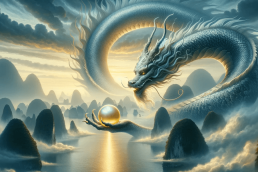Ah, desire…
What force.
What mystery.
And above all: what lack of understanding.
No wonder we have never really known how to do anything other than yield to it for millennia.
The more I write about desire, the more I discover a complex web of fundamental concepts that are essential in order to use it well. It is a web that’s difficult to untangle, even for the most attentive.
For example, consider this phrase: “Every desire seeks its own extinction.” It means so much… In fact, this post arose from an explanation I gave to someone who thought that phrase meant something pessimistic. That is not the case. Yet their assumption made me realise just how little we understand desire and its components, such as: fear, lack, tension, suffering, peace, movement, force, poison, and its veiled potential.
Here’s how these various components are intertwined in the phrase every desire seeks its own extinction:
-
Desire is linked to lack. We wouldn’t budge a millimeter if all desires for every possible need were fulfilled.
-
Lack itself is tied to the fear of experiencing lack.
-
Fear, connected to lack, creates an unpleasant inner tension.
-
Desire therefore often seeks to extinguish this suffering.
-
…often even more than it seeks to attain the object of desire itself.
-
So, at its core, every desire really seeks a form of peace.
-
Peace through its own extinction.
Is the meaning of every desire seeks its own extinction clearer now?
Two kinds of peace
The problem is that without desire, there’s no movement, no momentum. We stop moving forward. Stagnation. So ideally, we need to know how to do something at step 6…
Desire can be useful to retain. Assuming that we choose our fears wisely (turning them into constructive concerns), direct them toward nobler lacks, and do it all consciously. We then use the force of the main drive within us (desire), the force of this world, to propel ourselves. Movement is preserved and even enhanced.
A clever person knows how to attain peace (step 6 above) while avoiding step 7, the extinction of the tension of desire. They retain the force of desire and harness it.
In short, there are two kinds of peace. What are they?
-
Inert peace: there is no force left. No more interaction or movement. It has dissipated. This is what Schrödinger called inert equilibrium. It’s maximal entropy.
-
Dynamic peace: the forces are in balanced, dynamic exchange.
 Want a visual example of the two kinds of peace?
Want a visual example of the two kinds of peace?
A yin-yang of inert peace would have succumbed to the forces of black and white and collapsed into a uniform gray circle, without contrast. That’s the end result of entropy: dissipation of force.
A yin-yang of dynamic peace keeps each part (black and white) present and interacting, yet distinct. It’s the opposite of entropy. It’s syntropy or negentropy.
As the Hevajra Tantra says: “By passion the world is bound, by passion too it is released.”
“That by which the world is bound (passion), it is also by that which it is liberated.” – Hevajra Tantra
But not just any use of passion. Not by letting its force decline to the stage of inert peace (which is what the universe tends toward), but rather dynamic peace (which is much rarer).
Desire as poison…or remedy?
The art of desire is the science of using what is generally a poison as a remedy. It is knowing how to harness it, balance it, and not simply seek the extinction of tension. It’s the very rare art of those who learn to love the enlivening tension of dynamic balance. Think surfing or snowboarding.
If we could change our vision of desire, almost all the world’s problems could gradually resolve themselves. Almost every difficulty is caused by a pathological increase in the fear of lack. Lack of resources, power, money, land, admiration, more and more, out of fear… It drives multinationals, governments, marketing, propaganda…it is everywhere. With a different concept of desire, mastered during our education, every aspect of human existence on earth would be positively affected….
But, is that in the shareholders’ interest?
It’s high time we learned to cope constructively with this human problem (potential asset?) of desire. That’s what sages from all dharmic traditions, philosophers from many countries, and neuroscientists today have been shouting from the rooftops.



